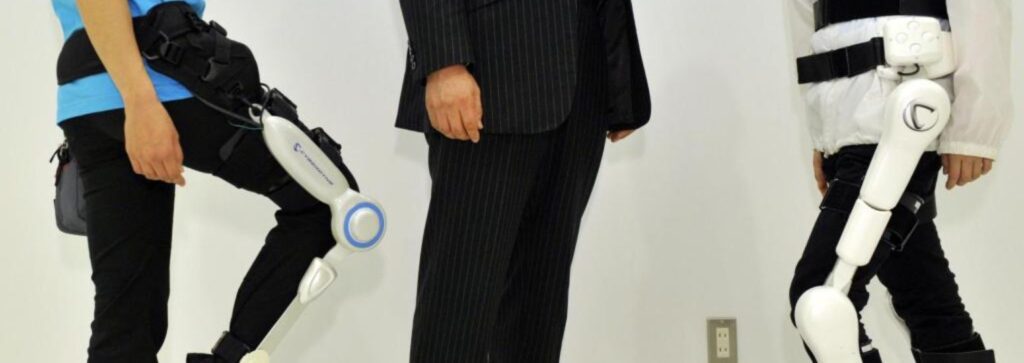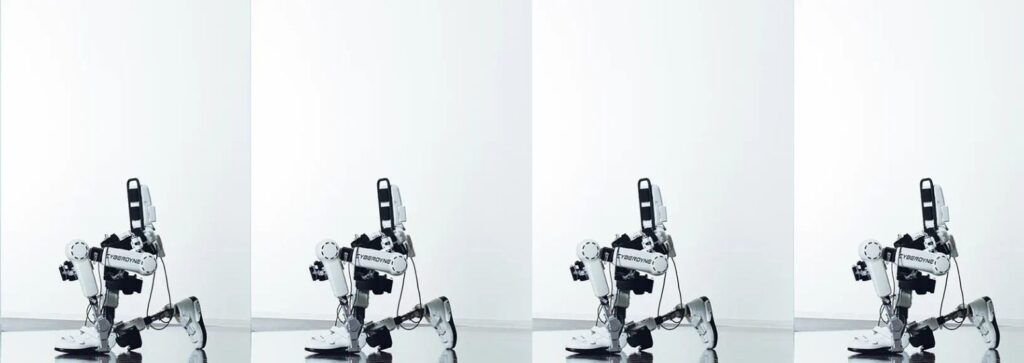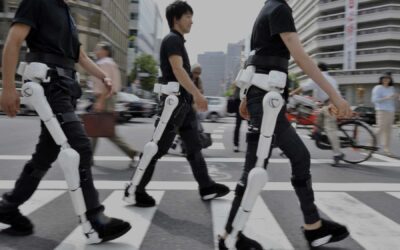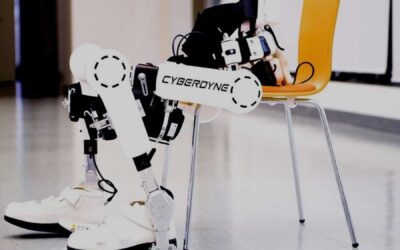Cyberdyne’s “Wearable Cyborg™ is a robot designed to assist individuals with lower limb disabilities by utilising Hybrid Assistive Limb (HAL) technology to help them regain the ability to walk.
Our brain sends bio-electrical signals to trigger movement, which may be too weak in paralysed individuals.
HAL can detect and process faint bio-electrical signals on the skin and assist with the desired movement using motors at the hip and knee joints.
Additionally, the sensory system provides feedback to the brain, allowing it to learn how to move the legs through repetitive HAL gait training.
Principles of HAL in Cyberdyne Therapy

Signals from the brain to the muscles trickle onto the skin’s surface as very faint bio-electrical signals when a person attempts to move. These signals can be detected by HAL, which then consolidates various information to complete the motion of patients. Through HAL, this establishes a neurological loop of afferent and efferent neurons between the brain and muscle.
The HAL pattern
Send
The brain transmits commands. When an individual attempts to move, the brain sends the required signals through the nerves to the muscles.
Receive
Command signals are sent to the muscles. When each muscle receives the appropriate command signal through the nerves from the brain, it contracts to move its corresponding joint. In the case of a spinal cord injury, this pathway is disrupted, resulting in a weak signal that cannot generate sufficient force.
Read
The hybrid assistive limb interprets the signals. The brain sends signals to the muscles, which appear as faint bio-electrical signals (BES) on the skin surface. HAL can identify and combine these signals with other data collected by the device to understand and execute the intended movements of patients.
Move
The wearer’s intentions guide HAL’s movements. Based on these BES, HAL independently regulates the power units at each joint and enables the wearer to execute desired movements through voluntary commands.
Interpretation

The brain receives information about movement. HAL- the Wearable Cyborg™ sends feedback to the brain when appropriately assisting the intended movement. Consequently, a neurological loop is established between the brain and the muscles through HAL, involving afferent and efferent neurons.
This network of signals induces neuroplasticity, referred to as “interactive biofeedback.” Voluntarily using these neural pathways for movement with physical feedback to the brain improves the wearer’s ability to walk independently.
Rehabilitation-
The essential factor in enhancing functional progress with Cyberdyne Treatment involves transmitting intentional command signals, not just passively receiving them.
Physical therapy rehabilitation robots guarantee the proper execution of exercises and often assist in bearing the patient’s body weight, allowing them to engage in longer sessions without fatigue. They also track progress and offer an impartial evaluation and report.
To learn more about the treatment plans, please visit https://rehabmodalities.com/.



